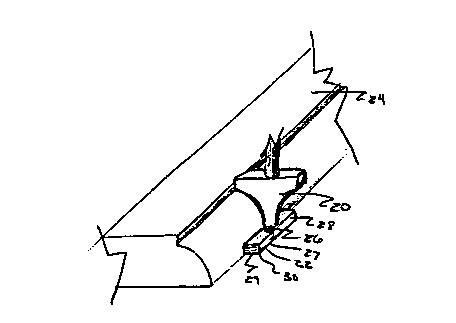Some of the information on this Web page has been provided by external sources. The Government of Canada is not responsible for the accuracy, reliability or currency of the information supplied by external sources. Users wishing to rely upon this information should consult directly with the source of the information. Content provided by external sources is not subject to official languages, privacy and accessibility requirements.
Any discrepancies in the text and image of the Claims and Abstract are due to differing posting times. Text of the Claims and Abstract are posted:
| (12) Patent Application: | (11) CA 2201047 |
|---|---|
| (54) English Title: | BEARING GUIDE FOR ROUTER BIT |
| (54) French Title: | APPUI-GUIDE POUR MECHE DE VILEBREQUIN |
| Status: | Deemed Abandoned and Beyond the Period of Reinstatement - Pending Response to Notice of Disregarded Communication |
| (51) International Patent Classification (IPC): |
|
|---|---|
| (72) Inventors : |
|
| (73) Owners : |
|
| (71) Applicants : |
|
| (74) Agent: | SMART & BIGGAR LP |
| (74) Associate agent: | |
| (45) Issued: | |
| (22) Filed Date: | 1997-03-26 |
| (41) Open to Public Inspection: | 1997-09-29 |
| Availability of licence: | N/A |
| Dedicated to the Public: | N/A |
| (25) Language of filing: | English |
| Patent Cooperation Treaty (PCT): | No |
|---|
| (30) Application Priority Data: | ||||||
|---|---|---|---|---|---|---|
|
A router bit has a bearing guide which does not rotate
with the bit. The router bit has a downwardly directed
axial tip which engages and rotates in a bearing socket of a
bearing guide plate having a straight edge to abut the work
being cut. Because the guide does note rotate with the
router bit there may be less danger of the guide gouging or
marking the work.
Mèche de vilebrequin munie d'un appui-guide qui ne tourne pas avec la mèche. Cette dernière, dont l'extrémité axiale est dirigée vers le bas, s'insère et tourne dans la douille de l'appui-guide, qui est doté d'un bord droit destiné à buter contre la pièce que l'on taille. Étant donné que l'appui-guide ne tourne pas avec la mèche de vilebrequin, les risques qu'il entaille ou égratigne la pièce sont réduits.
Note: Claims are shown in the official language in which they were submitted.
Note: Descriptions are shown in the official language in which they were submitted.

2024-08-01:As part of the Next Generation Patents (NGP) transition, the Canadian Patents Database (CPD) now contains a more detailed Event History, which replicates the Event Log of our new back-office solution.
Please note that "Inactive:" events refers to events no longer in use in our new back-office solution.
For a clearer understanding of the status of the application/patent presented on this page, the site Disclaimer , as well as the definitions for Patent , Event History , Maintenance Fee and Payment History should be consulted.
| Description | Date |
|---|---|
| Application Not Reinstated by Deadline | 2002-03-26 |
| Time Limit for Reversal Expired | 2002-03-26 |
| Letter Sent | 2001-04-05 |
| Reinstatement Requirements Deemed Compliant for All Abandonment Reasons | 2001-03-26 |
| Deemed Abandoned - Failure to Respond to Maintenance Fee Notice | 2001-03-26 |
| Deemed Abandoned - Failure to Respond to Maintenance Fee Notice | 2000-03-27 |
| Appointment of Agent Requirements Determined Compliant | 2000-01-18 |
| Inactive: Office letter | 2000-01-18 |
| Inactive: Office letter | 2000-01-18 |
| Revocation of Agent Requirements Determined Compliant | 2000-01-18 |
| Revocation of Agent Request | 2000-01-06 |
| Appointment of Agent Request | 2000-01-06 |
| Application Published (Open to Public Inspection) | 1997-09-29 |
| Inactive: First IPC assigned | 1997-06-18 |
| Inactive: IPC assigned | 1997-06-18 |
| Inactive: Inventor deleted | 1997-06-17 |
| Inactive: Correspondence - Formalities | 1997-06-16 |
| Inactive: Inventor deleted | 1997-06-13 |
| Filing Requirements Determined Compliant | 1997-06-13 |
| Inactive: Filing certificate - No RFE (English) | 1997-06-13 |
| Inactive: Applicant deleted | 1997-06-13 |
| Inactive: Applicant deleted | 1997-06-11 |
| Abandonment Date | Reason | Reinstatement Date |
|---|---|---|
| 2001-03-26 | ||
| 2000-03-27 |
The last payment was received on 2001-03-26
Note : If the full payment has not been received on or before the date indicated, a further fee may be required which may be one of the following
Please refer to the CIPO Patent Fees web page to see all current fee amounts.
| Fee Type | Anniversary Year | Due Date | Paid Date |
|---|---|---|---|
| Application fee - small | 1997-03-26 | ||
| MF (application, 2nd anniv.) - small | 02 | 1999-03-26 | 1999-03-23 |
| MF (application, 3rd anniv.) - small | 03 | 2000-03-27 | 2001-03-26 |
| Reinstatement | 2001-03-26 |
Note: Records showing the ownership history in alphabetical order.
| Current Owners on Record |
|---|
| GREG DURAND |
| Past Owners on Record |
|---|
| None |